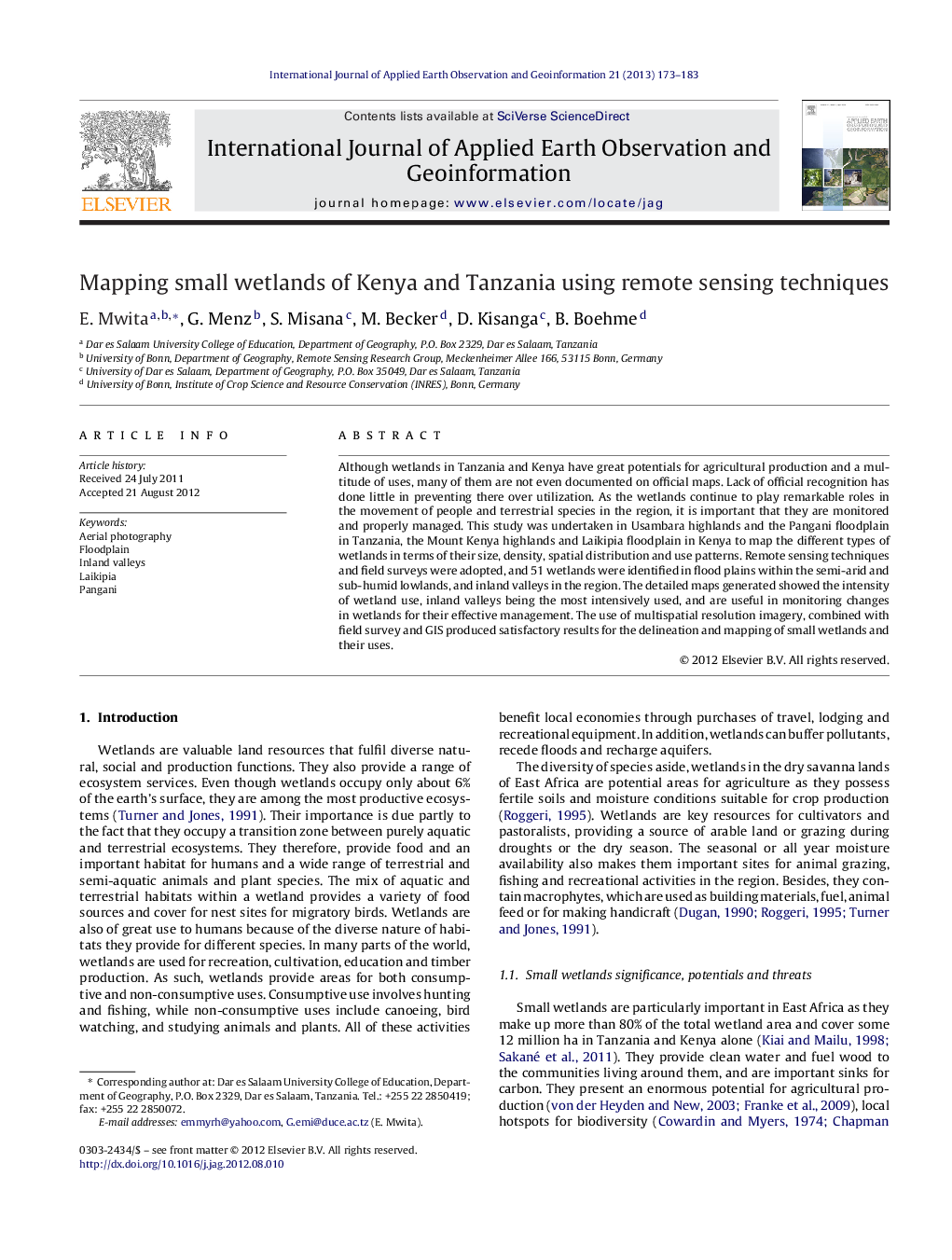| Article ID | Journal | Published Year | Pages | File Type |
|---|---|---|---|---|
| 4464850 | International Journal of Applied Earth Observation and Geoinformation | 2013 | 11 Pages |
Although wetlands in Tanzania and Kenya have great potentials for agricultural production and a multitude of uses, many of them are not even documented on official maps. Lack of official recognition has done little in preventing there over utilization. As the wetlands continue to play remarkable roles in the movement of people and terrestrial species in the region, it is important that they are monitored and properly managed. This study was undertaken in Usambara highlands and the Pangani floodplain in Tanzania, the Mount Kenya highlands and Laikipia floodplain in Kenya to map the different types of wetlands in terms of their size, density, spatial distribution and use patterns. Remote sensing techniques and field surveys were adopted, and 51 wetlands were identified in flood plains within the semi-arid and sub-humid lowlands, and inland valleys in the region. The detailed maps generated showed the intensity of wetland use, inland valleys being the most intensively used, and are useful in monitoring changes in wetlands for their effective management. The use of multispatial resolution imagery, combined with field survey and GIS produced satisfactory results for the delineation and mapping of small wetlands and their uses.
► A total of 51 wetlands covering 5% of the total surveyed area were identified. ► The main wetland types were inland valleys and flood plains. ► Wetland sizes ranged between 0.5 and 458 ha. ► The inland valleys were intensively used as compared to the floodplains. ► The use of multi spatial data and combination of techniques i.e. remote sensing and field survey, played great role in wetlands’ delineation and mapping.
